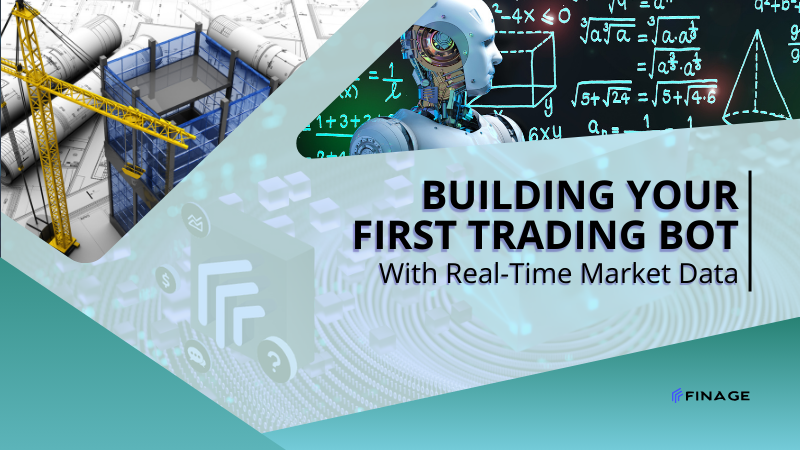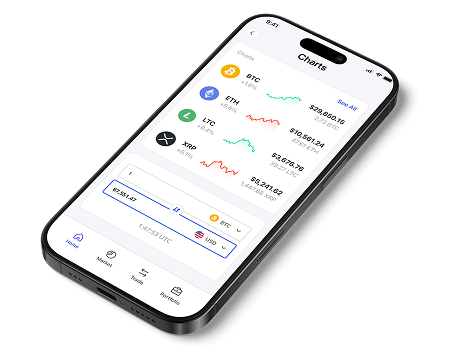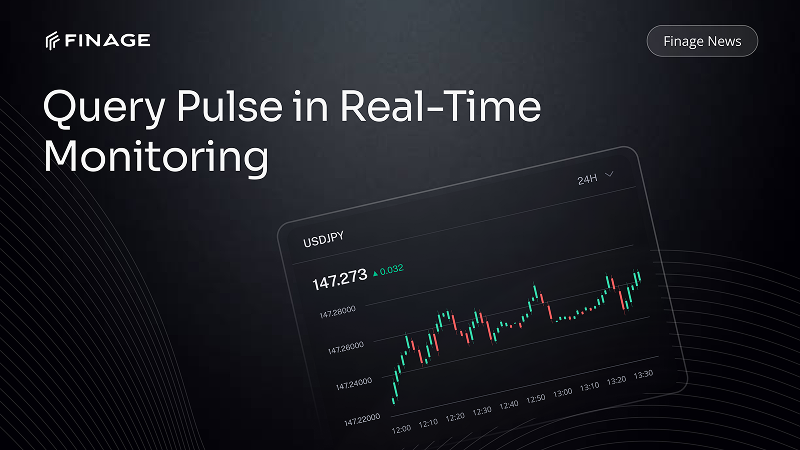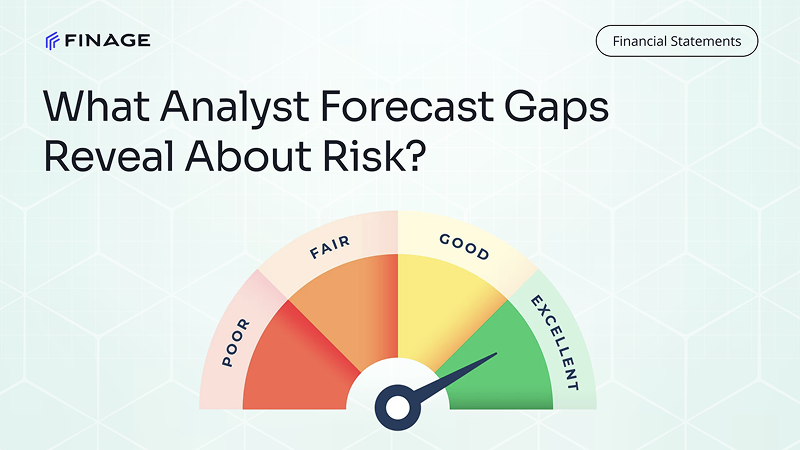Building Your First Trading Bot with Real-Time Market Data
8 min read • May 23, 2025

Introduction
Trading bots are no longer just tools for institutional desks—they’re now accessible to solo developers, fintech startups, and anyone with an interest in automation, finance, and real-time data. But while writing the bot logic is relatively straightforward, the key to building a trading system that actually works is one thing: market data.
Without reliable, real-time data, your bot is blind. It won't know when to buy, when to sell, or when to stay out of the market altogether.
In this guide, we’ll walk you through how to build your first trading bot using real-time market data APIs. You’ll learn how to set up data streams, make decisions based on price movements, and even prepare your bot for backtesting and scaling.
Table of Contents
- What Is a Trading Bot and How Does It Work?
- Why Real-Time Market Data Is Essential for Bot Accuracy
- Choosing the Right Market Data API (and What to Look For)
- Basic Trading Bot Architecture: From Data to Execution
- Example: Connecting a Bot to Finage’s Real-Time Data API
- Final Thoughts: From First Bot to Full Automation
1. What Is a Trading Bot and How Does It Work?
A trading bot is an automated system that executes buy or sell orders in financial markets based on predefined logic. Instead of relying on human decisions, it uses algorithms to respond to market conditions—often in fractions of a second.
Trading bots are widely used in both traditional finance and crypto markets. They can be:
- Rule-based (e.g., buy when price drops 3%)
- Indicator-driven (e.g., moving average crossovers)
- Event-driven (e.g., respond to price spikes, volume changes, or market news)
- AI/ML-based (using predictive models to forecast price movements)
How does a basic trading bot work?
- Data Input
The bot receives real-time market data, such as price, bid/ask spreads, and volume.
- Signal Generation
Based on logic or indicators, it evaluates whether to buy, sell, or hold.
- Order Execution
If conditions are met, the bot sends an order to a brokerage, exchange, or simulated environment.
- Logging and Risk Control
Every action is logged, and risk parameters (like stop-loss or max exposure) are enforced.
- Looping
This process runs continuously—often every second or on every tick of new data.
Trading bots can be as simple as a moving average crossover strategy or as complex as a multi-market arbitrage engine. What they all have in common is a need for clean, accurate, and low-latency data—which is where your choice of API becomes crucial.
2. Why Real-Time Market Data Is Essential for Bot Accuracy
Your trading bot is only as good as the data it reacts to. Without real-time access to price movements, bid/ask spreads, and trade volume, even the most well-written algorithm will operate on outdated or incomplete information.
This can lead to:
- Missed trading opportunities
- Delayed execution
- Increased slippage
- False entry/exit signals
- Poor backtest-to-live performance alignment
Key reasons real-time data matters:
Market Conditions Change Every Millisecond
Markets are dynamic. A trading opportunity might exist for just a few seconds—or less. If your bot is running on stale data, it’s reacting to a condition that no longer exists.
Price Accuracy Is Critical for Execution Logic
Whether your strategy is based on breakouts, thresholds, or percentage moves, it requires accurate prices. Small discrepancies can trigger false entries or miss fast-moving opportunities.
Indicator Calculations Depend on Fresh Data
Common indicators like RSI, EMA, or MACD are sensitive to recent data. Feeding them lagging values creates distorted signals.
Real-Time Volume Helps Validate Trades
Volume is often used to confirm breakouts, reversals, or support/resistance zones. Without up-to-date volume data, your bot may trade in low-liquidity environments, increasing risk.
Regulatory & Compliance Accuracy
If your bot is part of a system that logs trades, reports activity, or interacts with client funds, accurate timestamps and market context are essential for compliance and transparency.
3. Choosing the Right Market Data API (and What to Look For)
Before writing your first line of trading logic, you need to make one of the most important decisions: Where will your bot get its data from?
A good market data API doesn’t just deliver prices. It ensures:
- Low-latency delivery
- Accurate timestamping
- Consistent formatting
- Multi-asset support (if your bot trades more than one market)
Choosing the right API means fewer bugs, better strategy performance, and smoother scaling when your system grows.
What to look for in a trading bot data API:
Real-Time Data via WebSocket
You need more than polling. Look for an API that supports live price streaming through WebSocket. This lets your bot react instantly to market changes without delay.
Clean and Consistent JSON Format
Your bot will read hundreds of updates per minute. The data format must be easy to parse, well-documented, and uniform across assets (stocks, crypto, forex, etc.).
Reliable Timestamps
Each price update should include a UTC timestamp so your system can validate the sequence and track timing accurately—essential for backtesting and compliance.
Broad Market Coverage
If you're planning to trade different asset classes (e.g., stocks and crypto), you’ll save time by using an API that supports multiple markets from one place.
High Uptime and Transparent Rate Limits
Frequent disconnections or throttled requests will break your bot. Choose an API with high reliability and clear limits that scale with your usage.
Why Finage is a strong fit for trading bots:
- Real-time WebSocket streaming for stocks, forex, crypto, ETFs, and indices
- Millisecond-level tick data with timestamps
- REST endpoints for OHLCV and historical analysis
- Unified format across all asset classes
- Scalable pricing and free trial to get started quickly
Finage’s APIs give you the speed and consistency needed to test, launch, and scale automated strategies in production environments.
4. Basic Trading Bot Architecture: From Data to Execution
Even a simple trading bot follows a structured process: it receives data, analyzes conditions, and executes trades when criteria are met. Understanding this flow is essential before connecting any real-time API or exchange.
Here’s a breakdown of the key components in a typical trading bot setup:
Market Data Feed (Input Layer)
This is where the bot receives live price updates. You can use:
- WebSocket APIs for streaming tick-by-tick data
- REST APIs for historical or snapshot views (e.g., OHLCV, last close)
The bot listens to the feed continuously and processes every incoming tick.
Strategy Logic (Decision Layer)
This is the brain of the bot. Based on the data input, the logic engine evaluates your strategy, which could include:
- Price thresholds (e.g., buy if BTCUSD drops 2%)
- Indicators (e.g., 50/200 EMA crossover)
- Time-based triggers (e.g., rebalance every hour)
- Volume or spread conditions
The bot calculates signals in real time using the latest data.
Risk Management Layer
Before placing an order, the bot checks for:
- Position sizing (how much to buy/sell)
- Max exposure or leverage limits
- Stop-loss or take-profit settings
- Cooldowns or daily trade limits
This protects your capital and ensures disciplined execution.
Execution Module (Broker Interface)
If all conditions are met, the bot sends the order to an exchange or broker. This could be a market order, limit order, or custom order type.
Execution may use:
- API keys from a trading platform
- Test/sandbox environments (for development)
- Retry and error-handling logic in case of failure
Logging & Monitoring
Every action should be logged:
- Trade signals (triggered or skipped)
- Prices at decision time
- Execution results (success, error, latency)
- API responses
This helps you debug, improve performance, and prepare for backtesting.
5. Example: Connecting a Bot to Finage’s Real-Time Data API
To build a functioning trading bot, the first step is connecting it to a live data stream. With Finage’s WebSocket API, you can receive real-time market updates with minimal latency across multiple asset classes.
Here’s how to set up a simple Python-based listener for price ticks using Finage.
Step 1: Install Required Python Library
You’ll need websocket-client to handle the WebSocket connection.
pip install websocket-client
Step 2: Create a Real-Time Price Listener
This script connects to Finage’s real-time WebSocket endpoint and subscribes to a symbol (e.g., BTCUSD or AAPL).
import websocket
import json
token = 'your_socket_key'
def on_message(ws, message):
data = json.loads(message)
print(f"Symbol: {data.get('symbol')} | Price: {data.get('price')} | Time: {data.get('timestamp')}")
def on_open(ws):
payload = {
"type": "multi",
"symbols": ["AAPL", "BTCUSD"],
"token": WebSocket_Key
}
ws.send(json.dumps(payload))
if __name__ == "__main__":
socket_url = "wss://abcd1234.finage.ws:7000/?token=YOUR_SOCKET_KEY"
ws = websocket.WebSocketApp(socket_url,
on_message=on_message,
on_open=on_open)
ws.run_forever()
What this bot does:
- Connects to Finage’s WebSocket endpoint
- Subscribes to real-time trades for AAPL and BTCUSD
- Prints each new tick as it arrives, with price and timestamp
- Can be extended to plug into decision logic and execution systems
Add Trading Logic Next
Once the data stream is working, you can:
- Define your entry/exit rules
- Connect to a paper trading or live exchange API
- Build in your risk management logic
- Store and analyze trade logs for improvements
This example gives you the foundation to scale into a complete trading system powered by live, high-performance data.
6. Final Thoughts: From First Bot to Full Automation
Building a trading bot isn’t just a coding project—it’s the start of a fully automated trading system. Whether your goal is to automate a simple strategy or scale into a multi-asset, high-frequency engine, one thing remains constant: you need reliable, real-time market data to power every decision.
With the right architecture and a trusted data feed like Finage, you can:
- React to market movements instantly
- Execute trades with confidence and precision
- Test, refine, and scale strategies across assets and timeframes
- Build a foundation for compliance, logging, and performance monitoring
Finage gives you the infrastructure to go beyond static data and enter the world of live, event-driven trading—supporting stocks, crypto, forex, indices, and ETFs through both WebSocket and REST APIs.
Whether you're a solo developer, part of a fintech team, or an algo trading enthusiast, your first bot is just the beginning. What you build next is limited only by the speed of your data and the strength of your ideas.
You can get your Real-Time and Historical Market Data with a free API key.
Build with us today!
Claim Your Free API Key Today
Access stock, forex and crypto market data with a free API key—no credit card required.

Stay Informed, Stay Ahead
Finage Blog: Data-Driven Insights & Ideas
Discover company news, announcements, updates, guides and more

.png)
